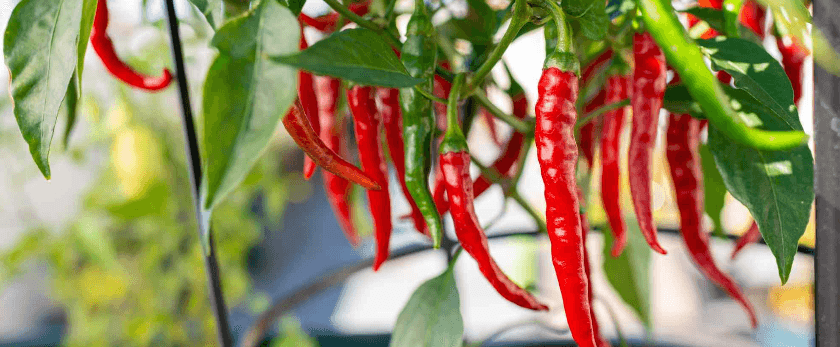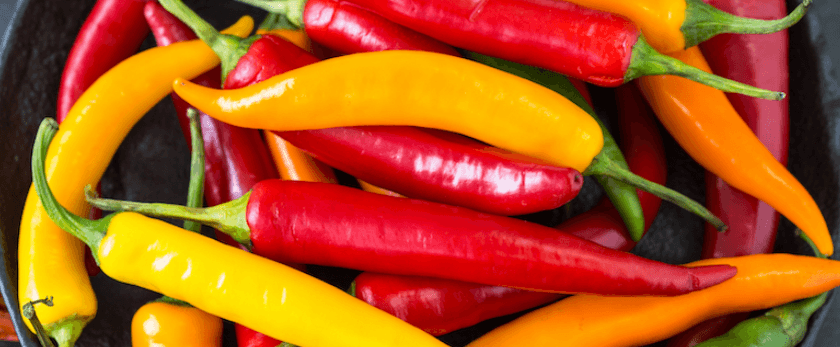Are you looking to add some spice to your garden and your meals? Look no further than chili peppers! These fiery little fruits not only add flavor to your dishes, but they also have numerous health benefits. Plus, growing your own chili peppers is a great way to reduce your carbon footprint and promote sustainable living.
In this article, we'll cover everything you need to know about growing chili peppers, from caring for them to common problems and the best time to grow them. So let's get started!
How to Care for Chili Peppers
Chili peppers are relatively easy to grow, but they do require some care and attention. Here are the key factors to keep in mind when caring for your chili pepper plants:
Watering
Chili peppers need consistent moisture, but they don't like to be overwatered. The best way to water them is to keep the soil evenly moist, but not soggy. You can achieve this by watering deeply once or twice a week, depending on the weather and the type of soil you have.
It's important to water at the base of the plant, rather than on the leaves, to avoid fungal diseases. Also, avoid getting water on the fruits, as this can cause them to rot.
Light
Chili peppers need plenty of sunlight to thrive. They should receive at least 6-8 hours of direct sunlight per day. If you're growing them indoors, make sure to place them near a sunny window or use grow lights to provide adequate light.
Soil
Chili peppers prefer well-draining, fertile soil with a pH level between 6.0 and 6.8. You can test your soil's pH level using a home testing kit or by sending a sample to a local agricultural extension office.
If your soil is too acidic, you can add lime to raise the pH level. If it's too alkaline, you can add sulfur to lower the pH level. It's important to maintain the right pH level for your chili peppers to absorb nutrients effectively.

Fertilizer
Chili peppers are heavy feeders and require regular fertilization to produce healthy fruits. You can use organic fertilizers, such as compost or manure, or a balanced fertilizer with equal amounts of nitrogen, phosphorus, and potassium.
It's best to fertilize your chili peppers every 2-3 weeks during the growing season. Be careful not to over-fertilize, as this can lead to excessive foliage growth and fewer fruits.
Pruning
Pruning is not necessary for chili peppers, but it can help promote better air circulation and prevent diseases. You can remove any dead or damaged leaves and branches, as well as any suckers that grow from the base of the plant.
What is the Best Time to Grow Chili Peppers?
The best time to grow chili peppers depends on your location and climate. In general, chili peppers are warm-weather plants and require a long growing season to produce fruits. They can be grown as annuals in cooler climates or as perennials in warmer regions.
If you live in a cooler climate, you can start your chili peppers indoors 6-8 weeks before the last frost date. Once the weather warms up, you can transplant them outdoors. In warmer climates, you can sow the seeds directly in the ground after the last frost date.
Chili peppers also prefer warm soil, so it's best to wait until the soil temperature reaches at least 60°F before planting them. You can use a soil thermometer to check the temperature.
Common Problems with Chili Peppers
Like any plant, chili peppers can face some common problems. Here are a few to watch out for and how to prevent or treat them:
- Pests: Aphids, spider mites, and whiteflies are common pests that can attack chili pepper plants. You can use insecticidal soap or neem oil to control these pests.
- Diseases: Chili peppers can be susceptible to fungal diseases, such as powdery mildew and blossom end rot. To prevent these diseases, make sure to water at the base of the plant and avoid getting water on the leaves and fruits.
- Blossom drop: If your chili pepper plants are dropping their flowers without producing fruits, it could be due to stress from extreme temperatures or inconsistent watering. Make sure to provide consistent moisture and protect the plants from extreme weather conditions.
- Fruit drop: If your chili pepper plants are dropping their fruits prematurely, it could be due to a lack of pollination or inadequate nutrients. You can hand-pollinate the flowers using a small paintbrush and make sure to fertilize regularly.
Sustainable Disposal Methods for Chili Peppers
When it's time to harvest your chili peppers, it's important to dispose of them responsibly to promote sustainability. Here are a few ways to do so:
- Composting: You can add any leftover chili peppers, as well as their stems and leaves, to your compost pile. This will help create nutrient-rich soil for your garden.
- Drying: If you have an excess of chili peppers, you can dry them and use them as a spice in your cooking. This will reduce food waste and save you money on buying spices.
- Sharing: If you have more chili peppers than you can use, consider sharing them with friends, family, or neighbors. This will not only reduce food waste but also promote a sense of community.
- Canning: You can also preserve your chili peppers by canning them. This will allow you to enjoy them throughout the year and reduce the need for store-bought canned goods.
Conclusion
Growing chili peppers is a fun and rewarding experience that can also promote sustainability. By following the care tips mentioned in this article and disposing of your chili peppers responsibly, you can reduce your carbon footprint and contribute to a greener, more eco-friendly lifestyle. So why not add some spice to your garden and your meals by growing your own chili peppers? Happy gardening!










